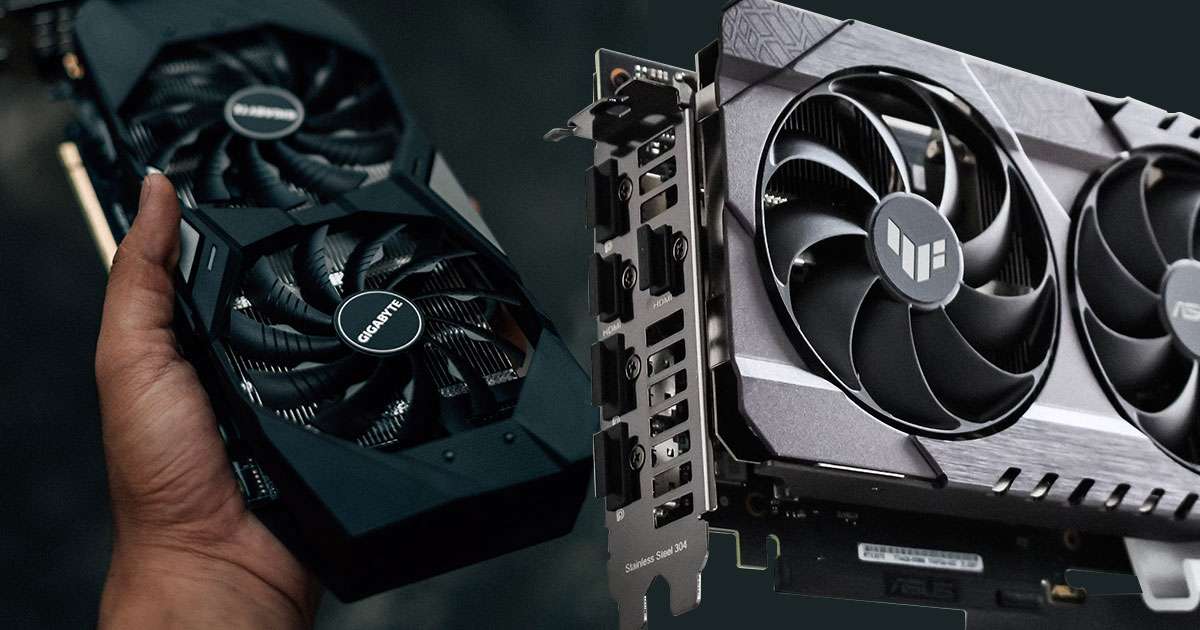GPU SOS: How to Tell if Your GPU is Failing?

Graphics Processing Units (GPUs) are important parts of modern computers, especially for jobs that require a lot of graphics, like gaming and video editing. However, like any hardware, GPUs can fail over time. Knowing the signs of a failing GPU can help you take action before complete failure occurs. Here are 10 key signs to help you tell if your GPU is failing.
1. Screen Artifacts and Visual Glitches
Seeing strange patterns or glitches on your screen is one of the most common signs that your GPU is failing. These can manifest as:
- Distorted images: Lines, shapes, or colors that shouldn’t be there.
- Screen tearing: When portions of the screen appear to be out of sync.
- Random dots or colors: Known as “artifacts,” these are typically small, irregularly placed pixels.
Most of the time, these problems mean that your GPU is having trouble rendering images properly.
Solutions:
- Check connections: Make sure your GPU is securely connected.
- Update drivers: Download the latest graphics drivers from the manufacturer’s website.
- Monitor temperatures: Ensure your GPU isn’t overheating by using temperature monitoring software.
2. Frequent Crashes and Freezes
Experiencing frequent crashes or system freezes, especially when running graphically intensive applications, can be a sign that your GPU is failing. If your computer crashes and restarts without any warning or freezes for no apparent reason, it might be time to check your GPU.
Solutions:
- Update drivers: Make sure your graphics drivers are up to date.
- Check power supply: Ensure your power supply unit (PSU) is adequate for your GPU.
- Reseat GPU: Remove and reinsert the GPU to ensure it’s properly connected.
3. Blue Screen of Death (BSOD)
Numerous hardware and software issues, including a failing GPU, can cause the infamous Blue Screen of Death (BSOD). If you receive BSOD errors with messages related to graphics or video drivers, it’s a strong indicator that your GPU might be faulty.
Solutions:
- Update drivers: Install the latest drivers.
- Run diagnostics: Use Windows’ built-in diagnostic tools to check for hardware issues.
- Check for software conflicts: Make sure no other software is conflicting with your GPU drivers.
4. Poor Performance in Games and Applications
A noticeable drop in performance, such as lower frame rates or stuttering in games and other graphics-heavy applications, can be a sign of a failing GPU. If your once smooth-running games now lag or perform poorly, your GPU might be deteriorating.
Solutions:
- Update drivers: Update the drivers for your GPU.
- Lower settings: Reduce graphics settings in games and applications.
- Clean your PC: When dust builds up, it can make things burn and run slowly.
5. Overheating and Excessive Fan Noise
GPUs can overheat if they are failing or if their cooling systems are not functioning properly. Signs of overheating include:
- Excessive fan noise: If your GPU fans are running at full speed constantly,
- High temperatures: Use a monitoring tool to check if your GPU temperatures are consistently above the manufacturer’s recommended limits.
- Overheating: It can seriously damage your GPU, so it’s important to address this problem immediately.
Solutions:
- Clean your GPU: Clean the GPU and its fans of dust.
- Improve airflow: Check that your PC case lets air move well.
- Replace thermal paste: Putting on new thermal paste will help the GPU cool down faster.
6. Driver Crashes and Errors
Graphics drivers are essential for the proper functioning of your GPU. If you encounter frequent driver crashes or receive error messages related to your graphics drivers, it might be a sign that your GPU is dead or faulty. Keep your drivers up to date, but if issues persist, the GPU could be the problem.
Solutions:
- Reinstall drivers: Uninstall and then reinstall the latest graphics drivers.
- Check for updates: Regularly update your GPU drivers.
- Use safe mode: Boot into safe mode to see if the problem persists.
7. Boot Issues and No Display
If your computer has trouble booting up, or if you get no display signal at all, your GPU might be failing. Symptoms include:
- Black screen: No signal to your monitor.
- Failure to POST: The system does not pass the Power-On Self-Test.
- Beeping sounds: Some motherboards emit beeps to indicate hardware issues, including GPU failure.
Solutions:
- Reseat GPU: Remove and reinsert the GPU.
- Test GPU on another system: Check if the GPU works on a different computer.
- Check cables: Make sure that all of the wires are properly attached.
8. Flickering and Screen Blankouts
Flickering or sudden screen blackouts during use can indicate a faulty graphic card. This problem may be most noticeable when playing games or editing videos that require more power from your GPU.
Solutions:
- Check connections: Ensure your display cables are properly connected.
- Update drivers: Make sure the drivers for your GPU are up to date.
- Test with another monitor: Make sure the drivers for your GPU are up to date.
9. Error Codes and Diagnostic LEDs
Some motherboards and graphics cards come with diagnostic LEDs or error code displays that can help identify hardware issues. If your motherboard’s diagnostic tools indicate a problem with the GPU, the GPU is likely failing.
Solutions:
- Consult the manual: Check your motherboard’s manual for error code meanings.
- Reseat GPU: Try removing and reinserting the GPU.
- Check power connections: Ensure the GPU is receiving adequate power.
10. Testing with Benchmarks and Stress Tests
Using benchmarking and stress testing software can help identify if your GPU is failing. Tools like 3DMark, FurMark, and Unigine Heaven put your GPU through intensive tasks to test its stability and performance. If your GPU fails these tests or shows signs of instability, it’s a strong indicator that it is on its way out.
Solutions:
- Run benchmarks: Use tools like 3DMark or FurMark to test your GPU.
- Monitor performance: Track GPU performance to identify issues.
- Replace GPU: If benchmarks fail consistently, consider replacing the GPU.
Detect a Failing GPU & Fix It Right Away!
If you know how to tell when a GPU is breaking, you can avoid unplanned downtime and data loss. You can keep your system running easily and fix problems early if you stay alert and take action. Remember, knowing how to tell if the GPU is failing can make all the difference in maintaining a healthy and functional computer setup.
If you think your GPU is having problems, do something right away. Whether it’s updating drivers, checking for overheating or seeking professional help, addressing the problem early can help prevent more severe damage and ensure your computer continues to perform at its best.

